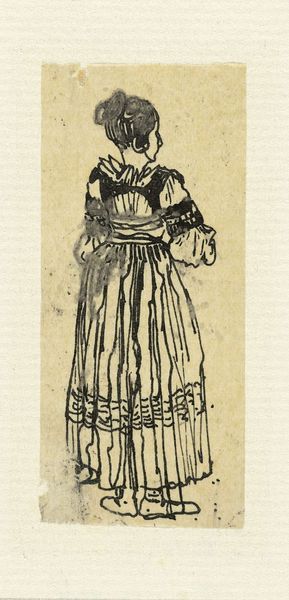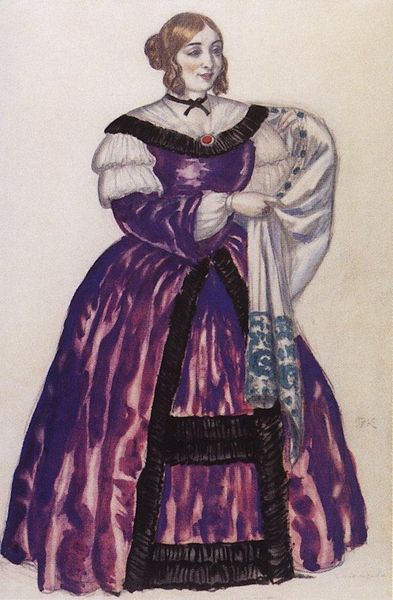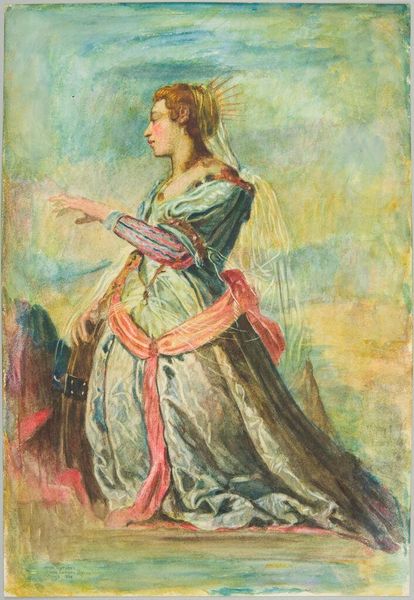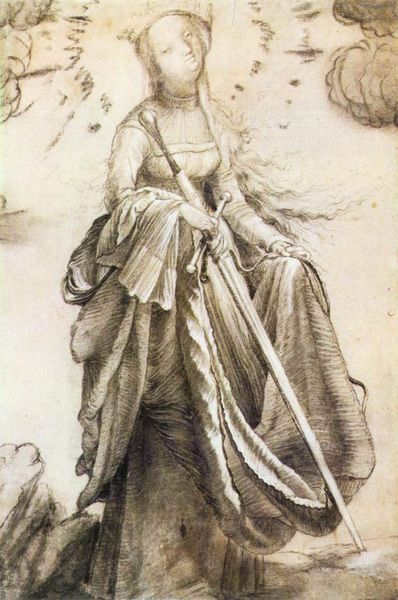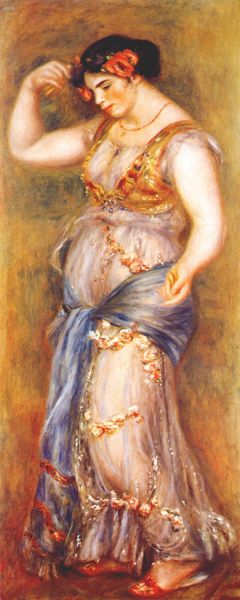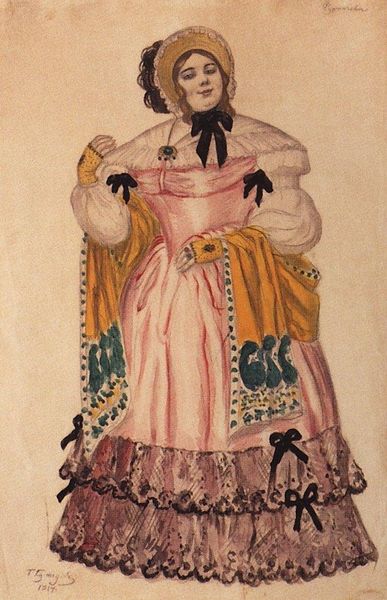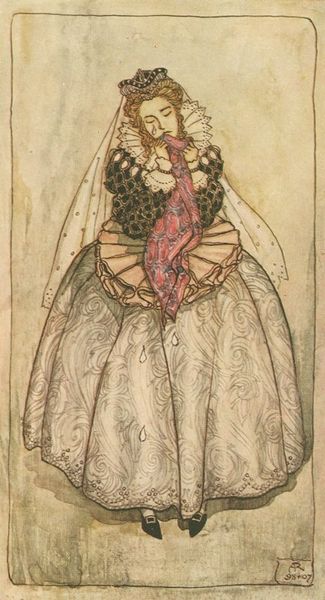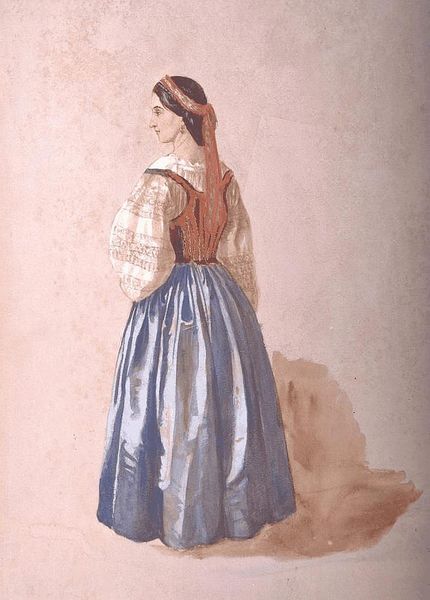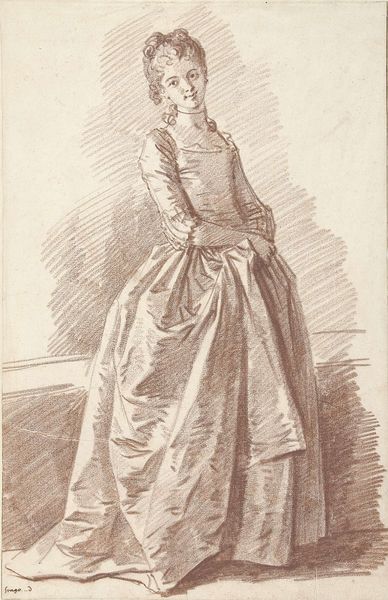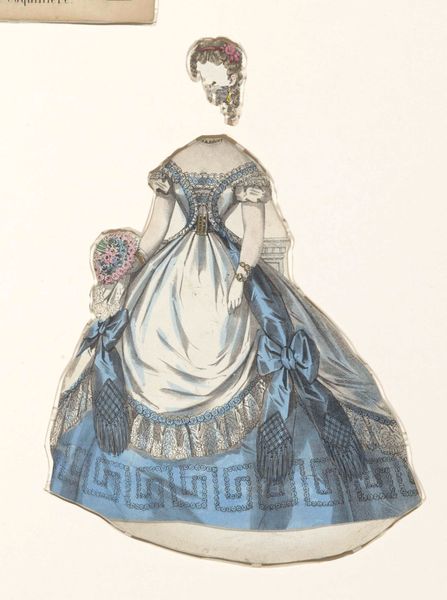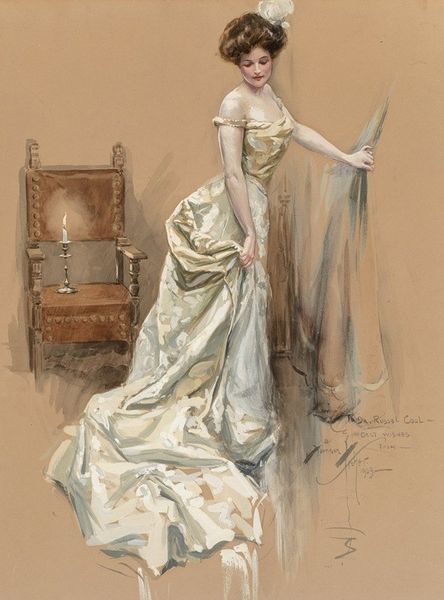
watercolor
#
portrait
#
impressionism
#
figuration
#
watercolor
#
costume
#
genre-painting
#
watercolor
Copyright: Public domain
Editor: Here we have Julian Ashton's "The Ball Dress," rendered in watercolor. It has a wistful and fleeting quality to it. How do you interpret this work through your expertise? Curator: The dress immediately grabs my attention, specifically the production of such elaborate clothing in the late 19th century. Consider the labor involved – the textile production, the lacework, the actual sewing... Editor: Yes, it looks like a significant investment of time and skill! Curator: Exactly! The materiality speaks volumes. Watercolor itself, a less valued medium than oil, creates a deliberate tension. Was Ashton perhaps commenting on the transience of beauty, class, or the art world itself? Or the illusion of it all, since labor is often kept hidden from sight? Editor: So you see the choice of watercolor, versus oil, as significant in understanding its meaning? Curator: Absolutely. Also consider the social context - who was this woman, where was she going, and who paid for her dress? The very act of depicting her, even in watercolor, elevates her social standing to be memorialized. The material conditions of production and consumption are vital lenses for analysis. Editor: I see how thinking about the materials and the process opens up new perspectives on what might initially seem like just a pretty picture. Thank you! Curator: My pleasure. Remembering that the "pretty picture" obscures the very real lives that made that beauty possible adds depth to even the lightest of brushstrokes.
Comments
No comments
Be the first to comment and join the conversation on the ultimate creative platform.

